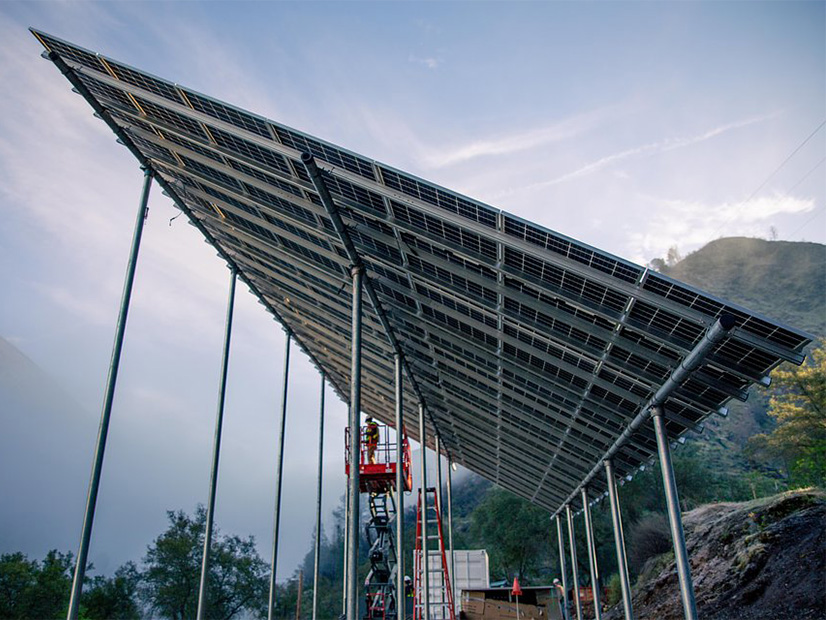
Pacific Gas and Electric plans to build more standalone “remote grids” in California this year, allowing the utility to remove distribution lines serving small groups of isolated customers as a way to reduce wildfire danger.
After finishing its first remote grid project in Briceburg, Calif., last year, PG&E said it was setting a target of having up to 20 remote grids up and running by the end of this year.
And community choice aggregators are partnering with PG&E on some of the projects. Sonoma Clean Power, which serves Sonoma and Mendocino counties, is hoping to have its first remote grid project completed within a year.
Sonoma Clean Power CEO Geof Syphers said the remote grids could increase the use of clean energy, decrease wildfire risk and reduce costs to electric ratepayers.
“It could be a triple win,” Syphers told NetZero Insider.
Solar, Storage and Backup
PG&E decided to build the Briceburg remote grid after the 2019 Briceburg Fire destroyed a distribution line serving five customers. The power line ran across rugged terrain in a high fire-threat area near Yosemite National Park.
The Briceburg remote grid consists of solar panels, battery storage and backup propane generators. It serves two homes, a visitor center, and telecommunications and transportation facilities.
The remote grid uses ground-mounted and container-mounted solar panels provided by BoxPower, a Grass Valley-based company. The containerized microgrid system may streamline development of future remote grids at similar sites, according to a release.
The remote grid includes a fire suppression system, and PG&E and BoxPower can monitor and control the grid via satellite.
The system is expected to provide up to 89% renewable energy per year.
“This hybrid renewable option reliably powers five customers without the need to rebuild the overhead line, and the remote grid is intended to meet customer needs at lower lifetime costs and a significantly lower risk of fire,” PG&E spokesperson Paul Doherty said in an email.
PG&E said there are hundreds of potential sites for remote grids in its service territory. The company is evaluating high fire-threat areas in El Dorado, Mariposa, Sonoma, Tulare and Tehama counties.
Lessons learned from Briceburg and other early projects will guide PG&E’s remote-grid expansion, the company said.
PG&E plans to provide an update on the remote grid program next month when the company files its 2022 Wildfire Mitigation Plan.
CCA Involvement
Community choice aggregators are helping PG&E with remote grid projects by reaching out to customers who might be good candidates for joining a remote grid.
Syphers at Sonoma Clean Power said the outreach includes a discussion on how to maximize the use of renewable energy. Thus far, one customer has agreed to a 100% renewable system, he said.
The trade-off for 100% renewable is the potential for reduced reliability, Syphers said. But he noted that customers might already be experiencing periods of public safety power shut offs while overhead distribution lines stay in place.
Syphers said a typical remote grid site would include one to three customers at the end of a power line running through a high fire-threat area.
Electric use for a remote grid should be on a residential scale, he said, although some non-residential uses such as agricultural water pumping could be accommodated.
It’s ultimately up to PG&E to decide whether a remote grid makes sense for a particular site, Syphers said. One factor is how the cost of a remote grid compares to the cost of hardening an overhead distribution line in a high fire-threat area, which could involve replacing bare overhead conductor with covered conductor, installing sturdier poles or moving the line underground.
“This is an opportunity to just be smarter about how we’re using ratepayer dollars,” Syphers said.
Sonoma Clean Power’s remote-grid planning also includes a “top-to-bottom” energy-efficiency retrofit.
Syphers said he could envision larger remote grids that include seven to 10 customers, but he noted that all customers must be willing participants.
“It could grow as we learn more,” he said.
